Dark Knight A True Batman Story HC NM Vertigo Paul Dini Eduardo Risso 1st print
$79.99
Description
DARK NIGHT: A TRUE BATMAN STORY HC (DC COMICS – VERTIGO)
PUBLISHER DC Comics – Vertigo
WRITER Paul Dini
ARTIST Eduardo Risso
COVER ARTIST Eduardo Risso
128 pages
Full Color
Graphic Novel
This is a Batman story like no other—the harrowing and eloquent autobiographical tale of writer Paul Dini’s courageous struggle to overcome a desperate situation.
The Caped Crusader has been the all-abiding icon of justice and authority for generations. But in this surprising original graphic novel, we see Batman in a new light-as the savior who helps a discouraged man recover from a brutal attack that left him unable to face the world. In the 1990s, Eisner Award-winning writer Paul Dini had a flourishing career writing the hugely popular Batman: The Animated Series and Tiny Toon Adventures. Walking home one evening, he was jumped and viciously beaten within an inch of his life. His recovery process was arduous, hampered by the imagined antics of the villains he was writing for television including The Joker, Harley Quinn and the Penguin. But despite how bleak his circumstances were, or perhaps because of it, Dini also always imagined the Batman at his side during his darkest moments. Dark Night: A True Batman Story is the harrowing and eloquent autobiographical tale of Dini’s courageous struggle to overcome a truly desperate situation. It is a Batman story like none other and one that will truly resonate with fans. Art by the incredibly talented Eduardo Risso (100 Bullets, Dark Knight III: The Master Race).
The #1 New York Times bestseller!
A gripping graphic memoir of one writer’s traumatic experience and his deep connection with his creative material, DARK NIGHT: A TRUE BATMAN STORY is an original graphic novel that will resonate profoundly with fans.
“A powerful tale of healing and redemption.”–Neil Gaiman, New York Times best-selling author of THE SANDMAN and American Gods
“Riveting form start to finish: so revealing, so poignant, so insightful…a masterpiece.”–Mark Hamill, Actor in Star Wars, Voice actor in Batman: The Animated Series and Batman: The Killing Joke
This is an unusual graphic novel — the protagonist isn’t a superhero in a colorful costume, it’s a guy who writes about those people. And it recounts how he found himself living through an encounter typical of the funnybooks but not playing out nearly as tidily and heroically in real life.
Paul Dini is an award-winning scripter of animated comics stories as well as the venerable print format and this is his true account of the night he became the victim of a savage mugging and how he fought to overcome its effects, aided (or hindered) in large part by his fictional creations and the lessons they imparted.
Expressively told and illustrated — typically breaking every fourth wall and convention of the comics — this is a powerful tale that meanders through other key events in Dini’s life — his childhood fascination with comics and superheroes, his growing absorption with making a career as a comics writer and immersing himself in typical fanboy pursuits, his luckless love life. Dini is very hard on himself, unsparing in his judgments. It’s quite an achievement for him to have overcome his cruel attack and put his life and career back together. A sort of Greek chorus is supplied by familiar guest stars who flit in and out of the story, sometimes in disguise, sometimes openly — Batman, of course, and Batgirl, but more commonly the rogues gallery of Bat-villains — Joker, Two-Face, Harley Quinn, Poison Ivy, Scarecrow, Penguin. A veritable Gotham City living in Dini’s head and manifesting at critical moments.
Without spoiling the story, I hope, you’ll be relieved to know, via a postscript page or two, that it all has a happy ending; ultimately, Dini shakes off his traumatic paralysis, regains his mojo, resumes creative work, and even woos and marries his very own Zatanna (how wonderful is that?!). Lessons learned, and life rolls on even if it will never be quite the same again.
I came away with appreciation for Dini’s honesty and candor. He’s been perhaps my favorite comics writer since I discovered his work and after reading this book, I also feel a new appreciation for Dini the person. And I also should note that he’s apparently got a terrific sister, and that Arleen Sorkin (the original and DEFINITIVE voice of Harley Quinn!) is absolutely wonderful, as you would expect.
“Dark Knight: A True Batman Story,” Dini’s Vertigo OGN drawn by acclaimed illustrator Eduardo Risso. The writer discusses the real-life violent origins of the story, how he dealt with the trauma and how writing this story allowed him to continue healing. He also talks about working with Eduardo Risso, how it felt to see some of the more violent pages brought to life and what depths the artists had to plumb within himself to bring it all to life.
On how a mugging inspired his new Batman story:
I look back to that time and there was a big split to the way I was living my life. I had gone through this experience and after months after I had got into it I was back at work and being upbeat, my same self, and I would go home at night and I would just drink myself stupid over this. Nobody really knew that I was doing that because in order to function I had to be one guy in one world and when I got home I was the other guy. That was just dealing with grief and misery and a lot of struggling feelings. It was something that I worked hard to get through at the time. People who were very close to me or who I worked with certainly knew about it, my family knew about it, but after that I felt like, ‘I got through it. I’m not gonna talk about it, I’m just gonna go on with my life.’
In the 23 years since then I have a certain perspective over it and I feel like I can tell the story without a lot of the anger or conflicting feels I had at the time. I feel like I was too angry or confused to tell the story any time prior to this and I needed that time to kind of heal and become another person and I feel like I’m on the way to being a more healthier, happier person. Telling the story helped a lot, too, because it was something that was just tucked away in a box and it wasn’t until Kevin Smith asked me about it on his podcast that I sort of pried the lid off. … So I started talking about it and I started working through some feelings again and I had been talking to Dan [DiDio] and Geoff Johns about doing something, a graphic novel, and somehow this came up. We thought it would be a good fit for a Vertigo story because it was a chance to do Batman in Vertigo but not really the Batman that we know in the DC Universe. And they had also done the book, Steven Seagle’s “It’s a Bird,” which is a wonderful book, and now this is sort of almost like a bookend. There’s the Superman version and now there’s the Batman version.
Because Batman was a very vivid character to me around that time, he was very much alive in my head and it was very easy for me to think in a very visual way of putting myself into that world, or have him standing next to me or hear the villains talking in my head. One step beyond that is bring them physically into the world where I’m having a dialogue with them but they’re really ghosts or spirits or things in my imagination. So there are scenes where I’m in a hospital room and the nurse is taking my blood and the Joker is kind of laughing or something, there’s a dialogue going on between all these characters, real and imaginary, at the same time. It worked out kind of therapeutic to tell the story that way. I think that a lot of people — the Batman characters are just more than they are on the page or in a movie or on TV. They symbolize so many things. Batman himself symbolizes so many things. The Joker, the Riddler, Robin, they are all extensions of the way we use our lives and imaginations so they became a very good chorus to echo the thoughts that I had at that time.
On thinking he never wanted to write Batman again during “Mask of the Phantasm”:
I never wanted to write Batman again, I knew that. We were in the middle of writing “Mask of the Phantasm” and I just told Alan Burnett, “Give my scenes to somebody else. I just don’t want to write it.” I was in the middle of writing this one scene where Bruce is assaulted by some street toughs, he’s trying to protect his girlfriend, “I can’t write this, and I don’t think I can write anything else.”
It was a time where what worked me out of it is people would say to me, “I like the cartoons. I like ‘Batman,’ I like ‘Tiny Toons,’ what’s coming up next?” They would tell me the shows meant a lot to them and that’s something I’ve discovered over the years. I got a wonderful letter recently from a police officer in Virginia who grew up watching the [“Batman”] animated series and it made him want to become a policeman. I think it’s good that I didn’t hang it up back then, and that’s a point I make in the book. If people like this stuff — rather than what it brings to me personally — if they’re really enjoying cartoons, and now’s the chance to really make some good cartoons, I really want to go back and be a part of that. And more importantly, if I walk away the bad guys win. And they can’t win.
On how confronting his feelings about the traumatic experience actually allowed him to get past it:
People have said to me, “Now that you’ve got the story out, does your heart feel lighter? Do you feel like a weight has been lifted?” And I said, “No, it’s still there, but I feel stronger.” And I feel that minimizes the burden is that I’m a bit tougher, I’m a bit stronger, and I can take on more than I thought I could.
On the lesson he learned from putting his creations out into the world:
Then they exist. Just bringing something into existence is really the best. And that’s also — I don’t want to quit, and I don’t want to give up anything. I talked to a little boy today who’s 12 years-old who came to the panel earlier today. He’s being bullied to the extent that he had to change schools and he says, “When does it get better?” And I said, “Not for a while. When you’re 30, the gap of five years is not gonna be that great to you. It’s great now because you’re 12 and you haven’t lived that much of your life, and I know how miserable this is. I know how bad you can feel. Everybody goes through it and I know that you just want to get through one more day. You gotta look at the big picture.”
And I said to him, “Whoever’s bugging you now is gonna stay where they’re staying. You’re gonna go on, so just go on”.
978-1-4012-4143-8
Near mint condition (both book and dust cover.) 1st printing.
Related products
-
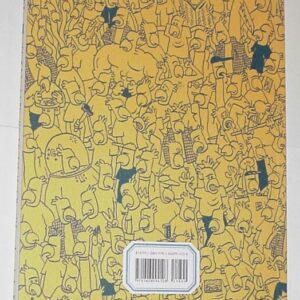
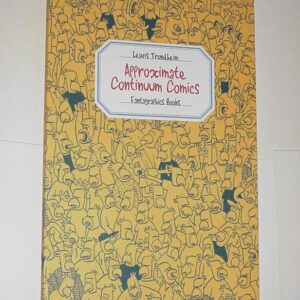
Approximate Continuum Comics TP Lewis Trondheim 1st print Fantagraphics
$49.99 Add to cart -
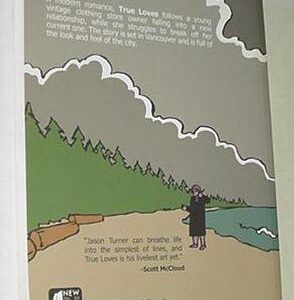

True Loves TP Jason Turner Manien Bothma 1st print
$49.99 Add to cart -

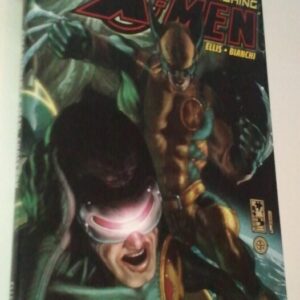
Astonishing X-Men: Ghost Box HC 1st print Warren Ellis Simone Bianchi Alan Davis
$99.99 Add to cart -

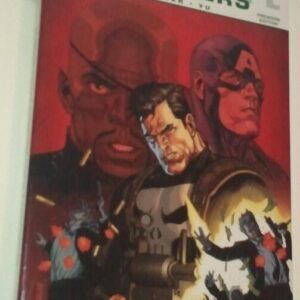
Ultimate Comics Avengers: Crime & Punishment HC NM Shrinkwrapped 1st print Millar Yu Punisher
$99.99 Add to cart






